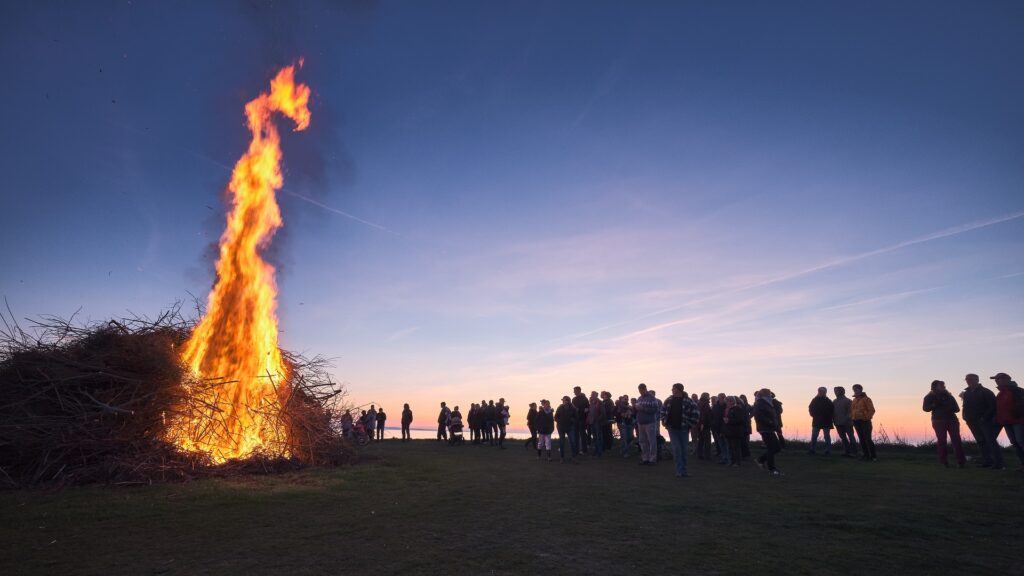Celebrating Easter originally comes from a Jewish tradition, observed in remembrance of the Israelites’ exodus from Egypt. With the spread of Christianity, Christians also began celebrating Easter as early as the 2nd century, but instead, they commemorated the resurrection of Jesus. The date of Easter can vary by up to a month between different years, but it always falls between March 22 and April 25. The Easter holiday today consists of Maundy Thursday, Good Friday, Holy Saturday, Easter Sunday, and Easter Monday. Easter is also closely linked to Shrovetide and Lent. It was on Easter Sunday that the Catholic Lenten fast ended.
The different days of Easter
Maundy Thursday:
The Maundy Thursday in the Easter week is a day of purification for the church. The church celebrates Maundy Thursday in memory of the first communion. It is also the day that – according to old folk belief – all witches must go to “Blåkulla”. Therefore it is necessary to hide the brooms, close the chimney dampers, and shoot rifle shots (today firecrackers) into the air. All to scare the witches. Well into the 18th century, it was forbidden to work on Maundy Thursday. One was not allowed to chop wood, nor to spin wool or wash clothes. “If anyone washed on Maundy Thursday, they washed the witch’s robe”
Good Friday:
Good Friday is the day of mourning, the day of Jesus’ death, when no unnecessary work was allowed to be carried out and public events were prohibited well into our time. Right up until 1969, there were “unwritten laws” that you should not do unnecessary chores, all children should be quiet and preferably not play too loudly, the food should be simple, and the radio and eventually the TV should preferably be switched off. Shops, restaurants and cinemas were closed.
Easter Eve:
On Easter Eve, it immediately became a little more fun. In Sweden today, we start celebrating right on the day of Easter Eve, the evening before the feast day, just like on Christmas Eve and Whitsunday, but according to old custom, you should wait until midnight on Easter Day. It was then that Easter, according to tradition, began through Christ’s resurrection from the dead. Then finally the long fast was over and now you could eat well again.
Easter Sunday:
Easter Sunday is the Christian Church’s biggest day. Then it is celebrated that Jesus has risen from the dead, and it is a day of joy.
Easter Monday:
On Easter Monday, the joy of the weekend celebration continues. In the past, this day was often the young people’s day, then it didn’t have to be calm and quiet anymore, you could instead be dancing and have a fun time.
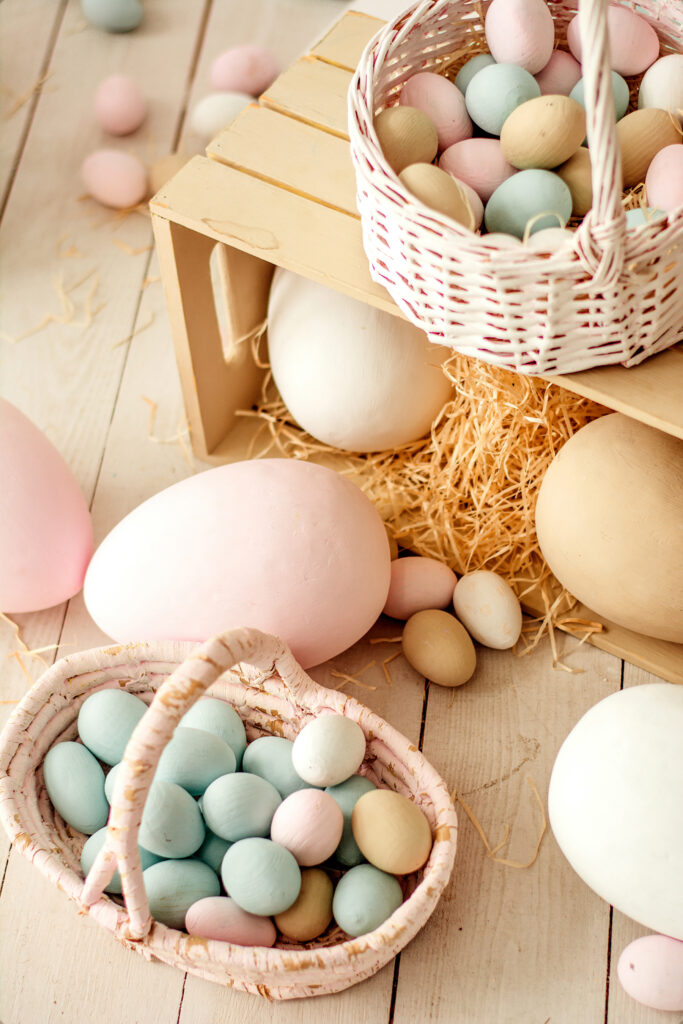
Easter traditions
Easter traditions have changed over time. Nowadays they are less about religion and more about being free from work. However, the traditions surrounding the Easter celebration mostly remain as they were – we decorate our homes in yellow and with small chickens, painted eggs, and flowers. We eat an Easter dinner, much like the Christmas dinner, but with significantly more eggs. The lamb on the Easter dinner table symbolizes Jesus’ sacrifice and is one of the most common dishes at Easter, which is also connected to the fact that the sheep give birth to their lambs in the spring which results in a good availability of lambs.
We also organize “egg hunts” and munch on sweets from Easter eggs, which are distributed by Easter witches or Easter bunnies.
Easter eggs
Eggs in various forms are an important element during the Easter weekend – as food, for decoration, and as gifts in the form of Easter eggs filled with sweets. Eggs are seen as a symbol of rebirth, eternal life, and resurrection.
There are also other reasons why we eat so many eggs at Easter. When Sweden was a Catholic country, we were forbidden to eat eggs during the 40-day Lent. Lent happens to coincide with the period when domestic birds lay the most eggs. Since all food containing eggs was prohibited during Lent, people accumulated a large stock of eggs for Easter, and therefore, they ate even more of them once it became allowed again.
At Easter, the eggs are used for all sorts of things – we eat eggs and chocolate eggs, paint, hide, and then look for the decorated eggs. Eggs are everywhere as decoration, and they are also used in cooking of course. Painted and decorated eggs were often given to friends and acquaintances at Easter. Giving each other Easter eggs on Easter Saturday is a European tradition dating back at least to the 18th century.
This tradition lives on, but today the Easter egg is no longer a painted chicken egg, but a cardboard egg filled with candy. The first cardboard eggs were made in Germany during the 19th century.
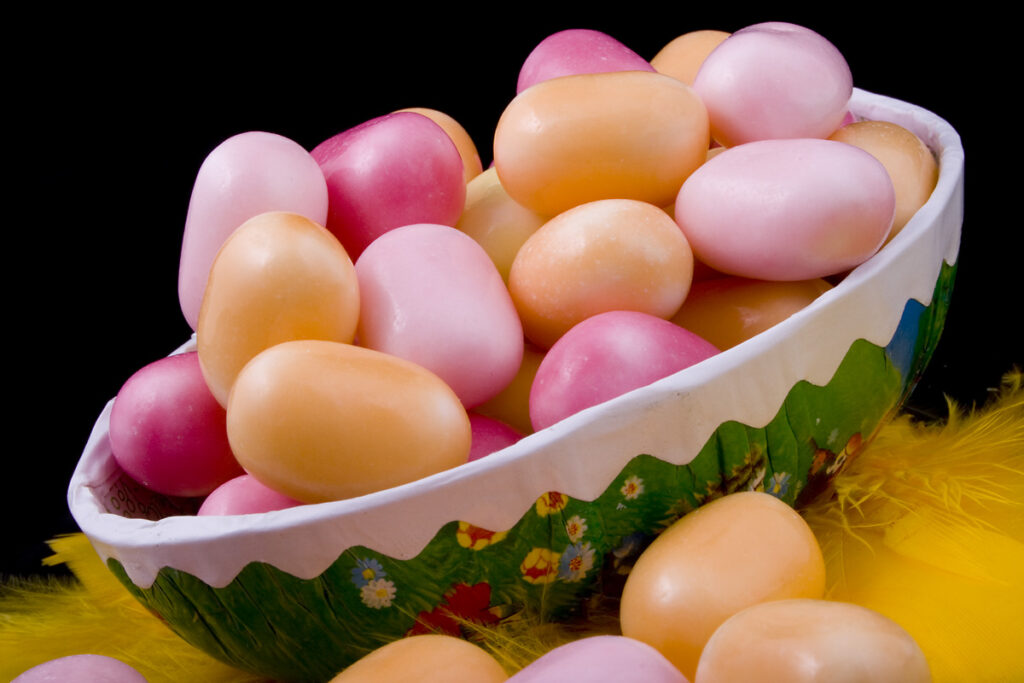
Decorated Easter twigs and Easter flowers
“Påskris” are bunches of birch twigs that are placed in water and which eventually develop small leaves. The rice is decorated with colored feathers or other colorful decorations and can be found in almost every home around Easter. Daffodils and narcissi have been in our homes at Easter since the 19th century. The narcissus symbolizes the resurrection, the daffodil symbolizes purity and innocence. In the past, the husband used the “Påskris” to beat the children and the servants on Good Friday so that they would remember how Jesus had been tormented on the cross.
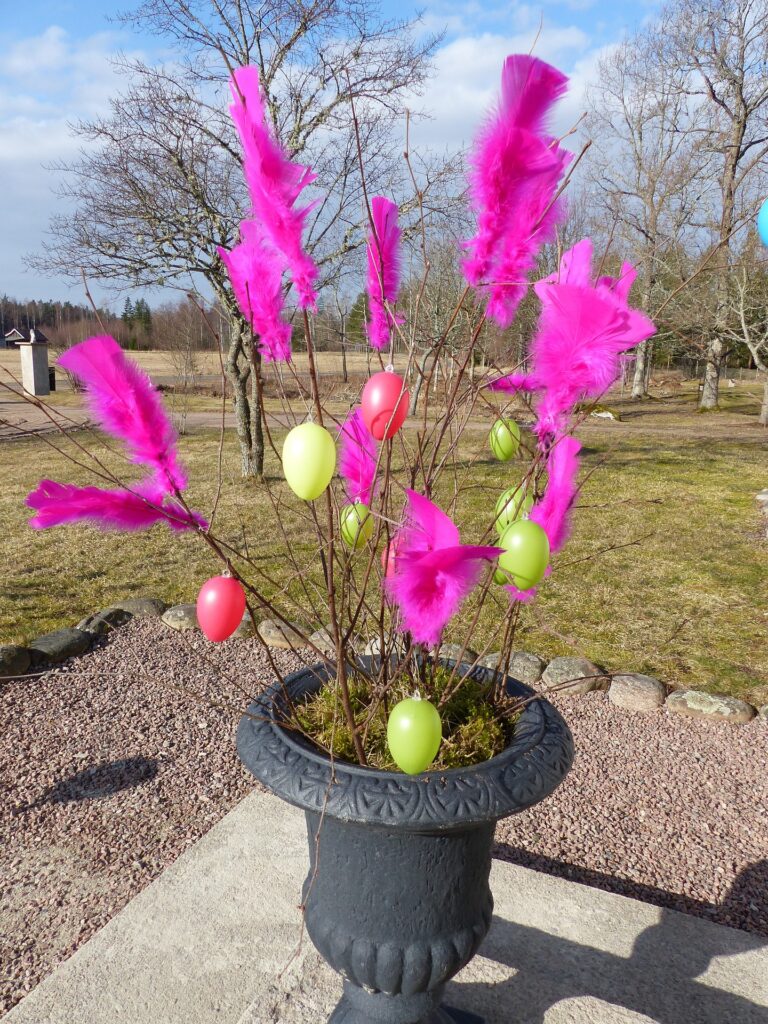
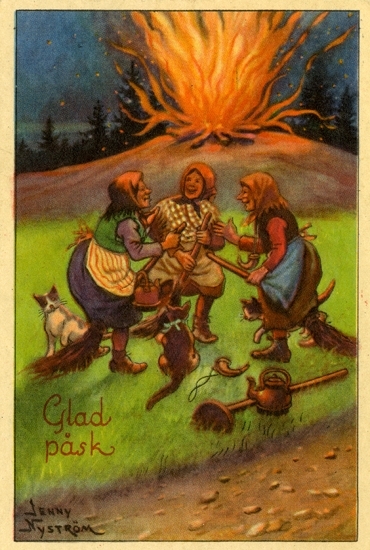
Easter witches
Today, young children dress up as Easter witches, and the male equivalent of these (påskgubbar in Swedish), and visit neighbors to wish them a happy Easter, handing out hand-drawn Easter letters. There are different traditions across the country— in some places, children hope to receive candy in exchange for their Easter letter, while in other areas, the letter itself is filled with candy and thrown into the house as the disguised sender shouts “GLAD PÅSK” (Happy Easter) and runs away.
The tradition of Easter witches is based on old folklore but differs greatly from the witches believed in during the 17th century, who, according to testimonies, flew to Blåkulla (the legendary “Blue Hill”) at Easter. The first recorded mentions of Easter witches date back to the late 19th century, but it wasn’t until the 20th century that the tradition became widely spread across Sweden.
The Easter bunny
The tradition of the Easter Bunny is believed to have arisen by simply misreading old illustrations or German images of the biblical Easter lamb as having looked like a hare. The tradition of the Easter Bunny bringing Easter eggs to the children or hiding a bunch of eggs in the garden is originally a German tradition dating back to the 17th century. In the 1850s, the Easter Bunny and Easter eggs were launched widely in Germany by the candy and toy industry. The Easter Bunny came to Sweden in the 20th century from Germany, but the tradition has not been properly established here. Chickens, eggs, hens, roosters, and Easter witches are more common Easter motifs than the Easter Bunny.
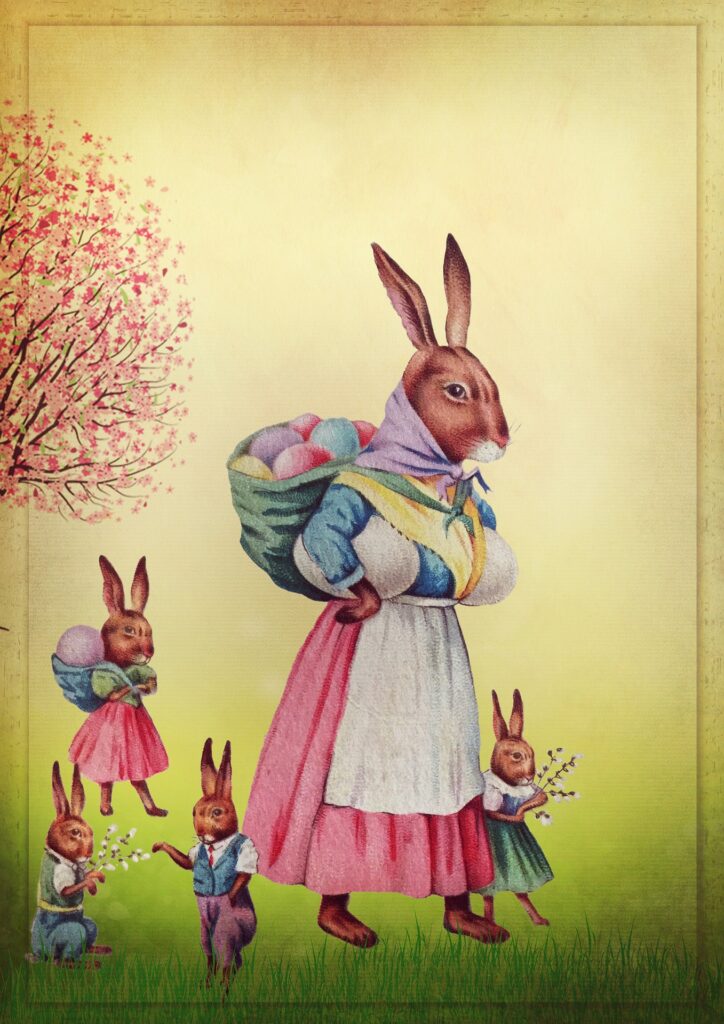
The Easter bonfire
The Easter bonfire is an outdoor bonfire that is usually lit on Easter Eve. The Easter bonfire has been known in Sweden and Finland since the 18th century. The custom has been most common in western Sweden, mainly in Västergötland, Bohuslän, Halland, southern Värmland and western Småland. The Easter fires were lit to scare away the witches who were on their way to or from Blåkulla during Easter. In the past, people started early, already after St Knut’s Day, to collect discarded Christmas trees and similar things for the Easter bonfire.
